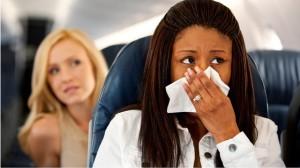 One of the last places you want to get sick is on a plane, especially if you’re on your way to a vacation destination. But the possibility of that happening is always there, hence why each seat comes with a handy barf bag.
One of the last places you want to get sick is on a plane, especially if you’re on your way to a vacation destination. But the possibility of that happening is always there, hence why each seat comes with a handy barf bag.
But what if you become ill more seriously than an upset stomach? What if you require medical attention and you’re nowhere near your final destination?
The scary reality is that you really can’t predict when medical emergencies, whether a heart attack, stroke, choking event or something else, may strike. Medical emergencies happen in the sky everyday – according to a 2013 study in the New England Journal of Medicine, about 44,000 in-flight medical emergencies take place worldwide each year. So if you or a loved one has one, what kind of treatment can you expect?
Unfortunately, if a passenger suffers a heart attack, seizer or another serious health issue on a plane, access to care is limited. However, serious illness on planes is rare.
The most common health issues on planes include fainting, respiratory problems, nausea or vomiting. And the study found that the death rate among all passengers with in-flight medical emergencies was less than 1 percent.
In the event that you or a loved one does get sick mid-flight, the members of your crew will serve as first responders – flight attendants are trained to handle medical emergencies and planes are equipped with first aid kits. While crew members can’t diagnose a sick passenger, they can treat their symptoms. They can also administer CPR or perform the Heimlich maneuver.
In addition, the Federal Aviation Administration (FAA) requires that planes carrying more than 30 passengers to have defibrillators and emergency medical kits. These kits include medications such as nitroglycerin tablets, which can relieve chest pain, and dextrose, to treat low blood sugar. The caveat to these medical emergency kits is that only a license medical professional can use many of the items in it. That’s why, if there is an emergency, flight attendants will page a doctor.
According to the study, traveling doctors, nurses and other health professional were able to help in three-quarters of in-flight medical emergencies.
Some emergencies require the plane to return to the ground. With domestic routes, if it’s necessary to divert the flight, a pilot can typically land in about 15 minutes. However, with international routes, a plan may be over an ocean and hours away from an airport.
While this sounds scary, the study found that most health issues can be successfully treated on board – only 7 percent of in-flight medical emergencies required the flight to be diverted.
Photo from http://www.airportparkingreservations.com/blog/avoid-germs-on-a-flight/.


